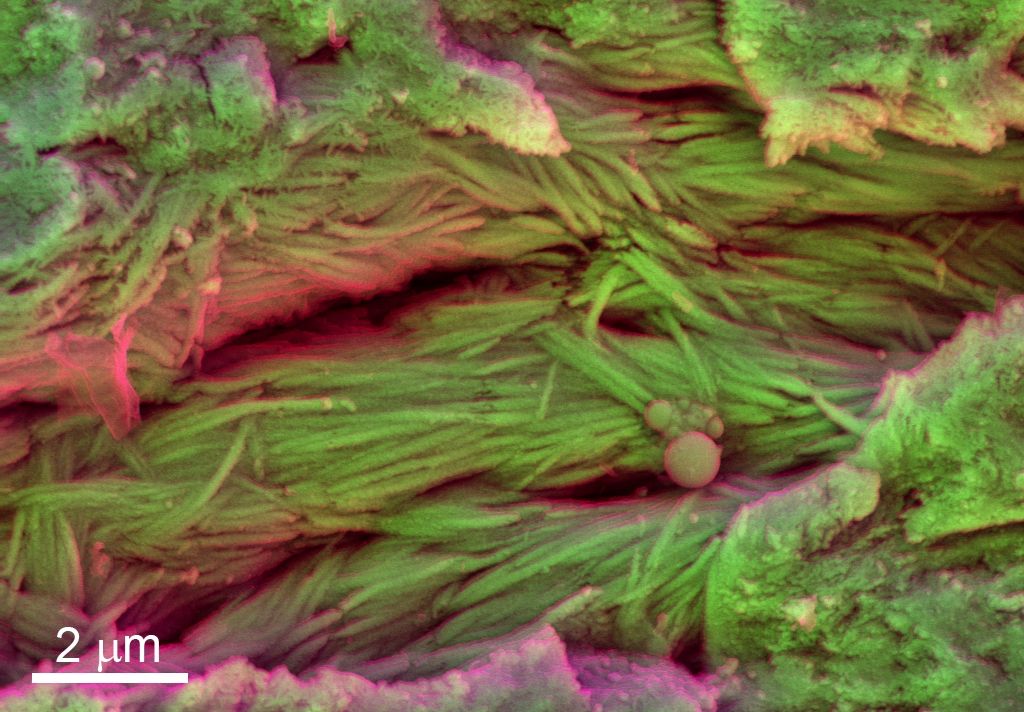Dinosaur Soft Tissue Recovered From Eight Cretaceous-Era Fossils
New sampling methods yielded cells and fibers from relatively ordinary fossils, broadening the possibilities for paleontology
/https://tf-cmsv2-smithsonianmag-media.s3.amazonaws.com/filer/59/a6/59a64795-1a65-4feb-a2af-ea4dbc8c662d/2.jpg)
As any Jurassic World fan could tell you, the soft tissues of ancient animals are supposed to be some of the first things to vanish in the fossilization process. While bones and teeth can be preserved for hundreds of millions of years, protein molecules decay in a mere 4 million years, leaving behind only traces of those building blocks of life.
Past efforts to recover organic structures such as skin, feathers and muscle fibers have focused on exceptionally well-preserved remains, yielding discoveries such as flexible tissue from a T. rex, hemoglobin from the inside of an ancient mosquito abdomen and pigment molecules from an Eocene turtle fossil. But those examples have always been seen as the exception rather than the rule.
Now, scientists at Imperial College London say they have overturned this long-held notion. As they report this week in the journal Nature Communications, it is possible to recover organic structures from fossilized specimens that are at least 75 million years old. This seems to be the case even for run-of-the-mill fossil bones that give no external hint of containing the remnants of soft tissues.
The fossils in question are eight Cretaceous dinosaur bones, representing unidentified species in both major dinosaur clades. Some are from the Ornithischia, which includes herbivores such as Stegosaurus and Iguanodon, while others represent the Saurischia, which covers carnivores such as Velociraptor as well as plant-eaters like Brachiosaurus.
All eight fossils used in the study are of only average quality. Despite this, the researchers were able to use new mico- and nano-scale mass spectrometry methods to observe what appear to be calcified collagen fibers in four of the fossils, and they resemble those in modern bones. The team also discovered structures akin to red blood cells in two of the fossils. A closer inspection of those structures revealed a striking resemblance to the blood cells of modern emus, 6-foot-tall flightless birds that live in Australia.

The new method, the team writes, expands the limits of what paleontologists thought was possible with regard to soft tissue recovery. Being able to sample and study fibers and cellular structures from a wider range of fossil species should help refine our understanding of the relationship between dinosaurs and modern birds, as well as provide new insight into dinosaur physiology, biochemistry and behavior.
Sampling tissues that span millions of years can also help clarify major evolutionary events. Red blood cell size, for example, correlates with metabolic rate in most vertebrates. Comparing cell size across a spectrum of ancient animals could offer clues about when and why some species transitioned from being cold-blooded to warm-blooded.
In short, the team writes, this discovery “inaugurates a new and exciting way to do paleontology.”
/https://tf-cmsv2-smithsonianmag-media.s3.amazonaws.com/accounts/headshot/Rachel-Nuwer-240.jpg)
/https://tf-cmsv2-smithsonianmag-media.s3.amazonaws.com/accounts/headshot/Rachel-Nuwer-240.jpg)